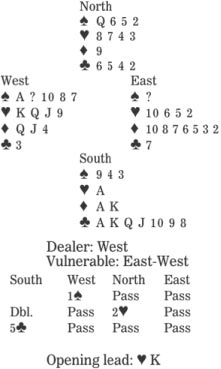
Most of the time at the bridge table, if you think the right thought at the appropriate moment, you will make the best call or play.
Today's deal is an example of that. How did South plan the play in five clubs after West led the heart king?
South's bidding left something to be desired. Ideally, North-South would have ended in three no-trump, which would have made with at least one overtrick. Over two hearts, South should have cue-bid two spades to show a very strong hand. Then, when North in desperation rebid three clubs, South could have cue-bid three spades to ask for a spade stopper. North, if a trusting partner, would have bid three no-trump-mission accomplished.
South starts with 10 top tricks: one heart, two diamonds and seven clubs. He must take a spade trick-but how?
Declarer wins with his heart ace, draws trumps, and pauses to consider the spade situation. He knows from the bidding that the suit is either 5-1 or 6-0. If it is 6-0, playing low to dummy's queen works fine. If the split is 5-1, that is also successful if East's singleton spade is at best the jack. But if East has the spade ace or king, South must duck the first spade trick. Which is the right play, and why?
Remember the opening lead: If West had started with the spade ace-king and heart king-queen, he would have led the spade ace, not the heart king. So South should lead a spade from his hand and play low from the dummy.


























 Raymond Zhou:
Raymond Zhou: Pauline D Loh:
Pauline D Loh: Hot Pot
Hot Pot Eco China
Eco China China Dream
China Dream China Face
China Face






